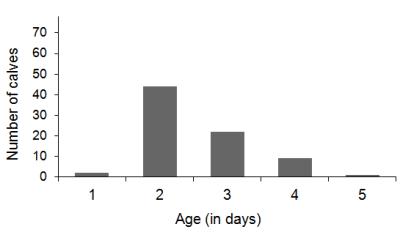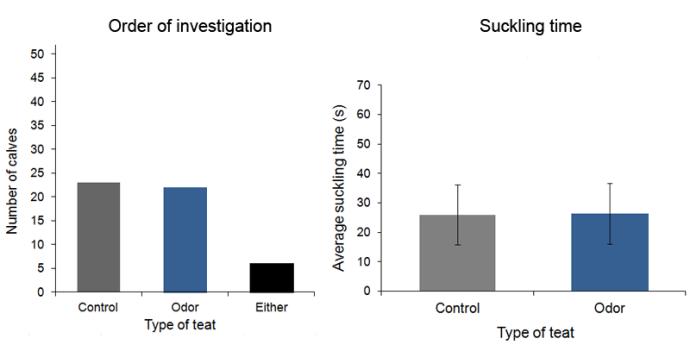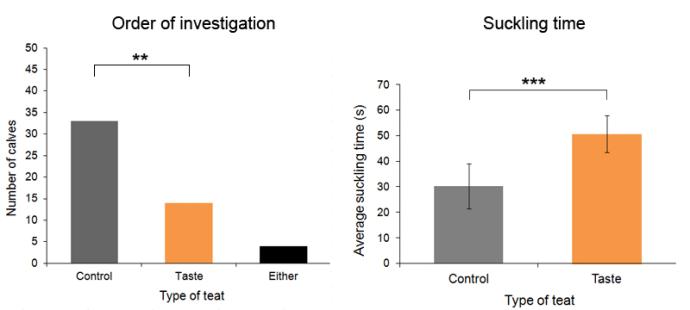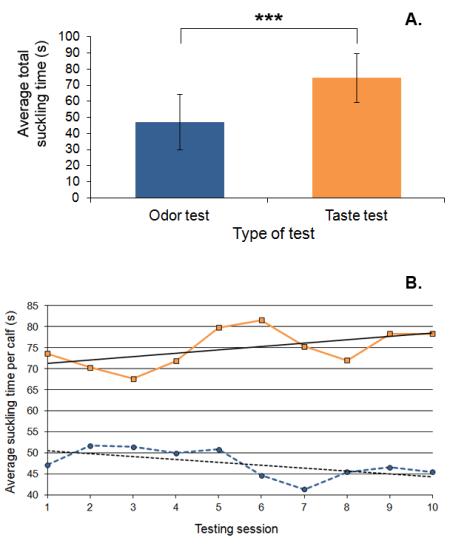Result highlights
Use of the artificial teat without lifting assistance in relation to age
The majority of the calves in the study were able to stand up and suckle the artificial teat for the first time without lifting assistance on the second or the third day of age.

Odor test
In the odor test, the calves as a group did not show a significant preference for a teat neither for the order of teat investigation (Binomial: n = 45, 23:22, p = 1) nor when assessing suckling times for the control teat versus the odor teat (Wilcoxon: n = 51, Z = -0.272, p = 0.786).

Taste test
In the taste test, the calves as a group showed a significant preference for the control teat regarding the order of teat investigation (Binomial: n = 51, 33:14, p = 0.008) and a significant preference for the taste teat when assessing suckling times for the control teat versus the taste teat (Wilcoxon: n = 51, Z = -6.177, p < 0.001).

Assessment of total suckling times (control plus modified teat)
The calves showed a significantly longer total suckling time during the taste test in comparison to the odor test (Wilcoxon: n = 51, Z = -6.215, p < 0.001). Furthermore, a significant positive correlation was found between the average total suckling time per calf and the consecutive testing sessions in the taste test (Spearman: n = 10, rs = 0.685, p = 0.035). In contrast, the average total suckling time per calf during the odor test did not systematically vary across the ten consecutive testing sessions (Spearman: n = 10, rs = -0.237, p = 0.510).

Responsible for this page:
Director of undergraduate studies Biology
Last updated:
05/30/17
